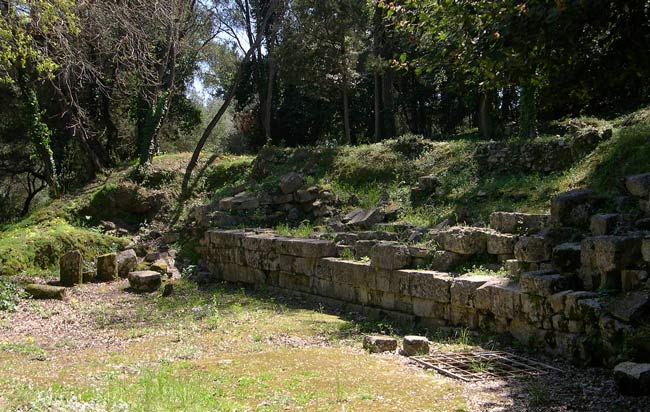
View from the northeast of the Classical peribolos wall encircling the Mon Repos sanctuary, behind
The first excavations at Mon Repos were led by Wilhelm Dörpfeld and the German Archaeological Institute over several weeks in 1914. Drawn by the discovery of Doric capitals by road-workers, Dörpfeld was prevented from returning to the site by the outbreak of the First World War.
The German project, nonetheless, recovered a tantalizing set of architectural terracottas from the monumental Archaic temple. Giorgos Dontas with the assistance of Petros Kalligas, both of the Greek Archaeological Service, renewed excavations in July 1962 until 1967. The team dug trenches over the majority of the sanctuary and recovered most of the architectural material now in the Corfu museum.
The Greek project established that the sanctuary was active by the early 7th century BC, with a major Archaic temple built by the end of the century and followed by subsidiary buildings surrounded by a perimeter wall. A major fire during the latter 5th century BC destroyed most of the sanctuary, which was subsequently restored and expanded. These works included a replacement temple of ca. 400 B.C., itself completely dismantled by stone looters of the Byzantine or Venetian periods.
Smaller excavations at Mon Repos have since been conducted by the Service.

The Archaic Sanctuary at Mon Repos, Corfu, is licensed under a Creative Commons Attribution-NonCommercial-NoDerivs 3.0 Unported License, and maintained by the Center for Digital Research in the Humanities. Please direct any questions to the site administrator.

